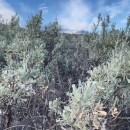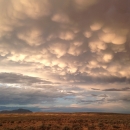States
UtahUtah: Conifer Treatment Projects for Upland Habitat Restoration and Enhancements
| Funding Year | Amount | Location |
|---|---|---|
| FY22 | $461,271 | Tooele, Box Elder, Sevier counties, Utah |
| FY23 | $232,398 | Tooele, Box Elder, Sevier counties, Utah |
| FY24 | $812,952 | Tooele, Box Elder, Sevier counties, Utah |
| FY25 | $258,738 | Tooele, Box Elder, Sevier counties, Utah |
Project Description
FWS is collaborating with the Utah Watershed Restoration Initiative to support upland habitat restoration in Utah's sagbebrush steppe. Removing conifers, seeding, planting sagebrush sagebrush
The western United States’ sagebrush country encompasses over 175 million acres of public and private lands. The sagebrush landscape provides many benefits to our rural economies and communities, and it serves as crucial habitat for a diversity of wildlife, including the iconic greater sage-grouse and over 350 other species.
Learn more about sagebrush seedlings, developing fire breaks and erosion control at streams will result in wildlife habitat enhancement, reduced risk of catastrophic wildfire, and enhanced water availability.
Partners
Utah Watershed Restoration Initiative, Utah Habitat Council, Bureau of Land Management, Natural Resources Conservation Service, Utah Division of Wildlife Resources/Department of Natural Resources, U.S. Forest Service



